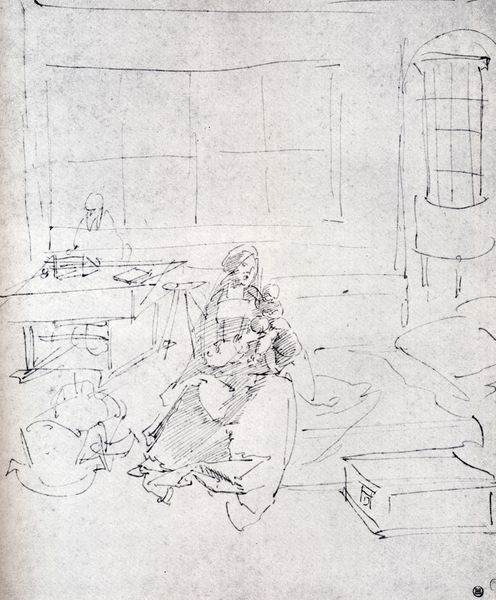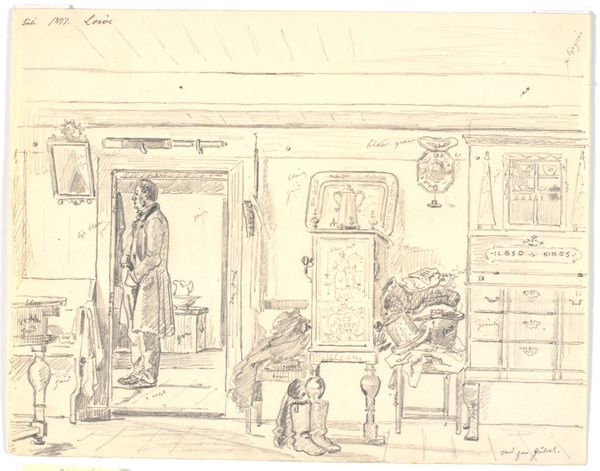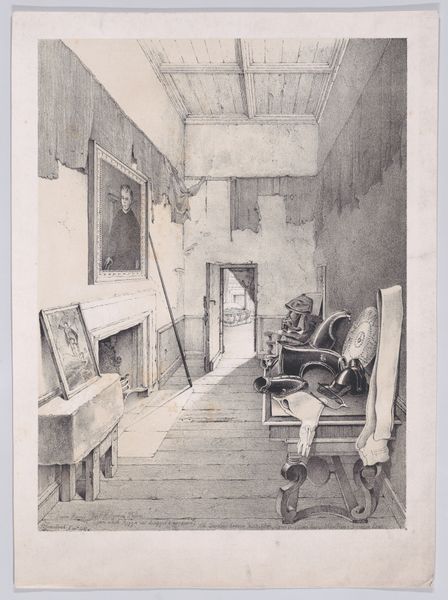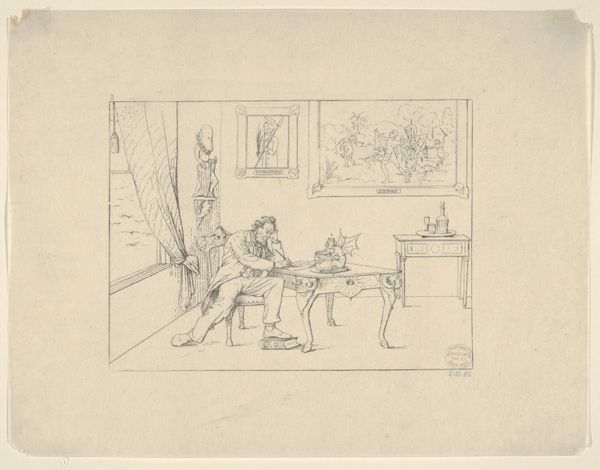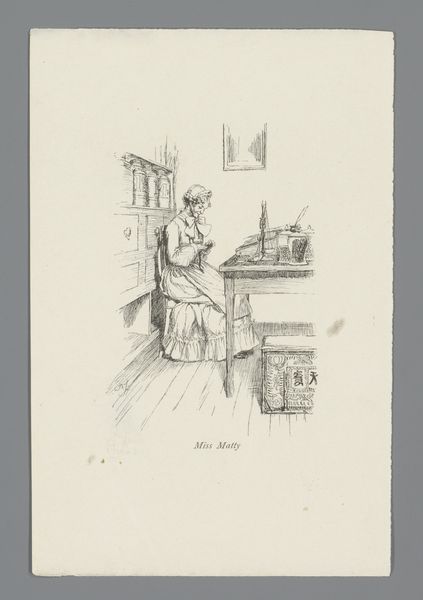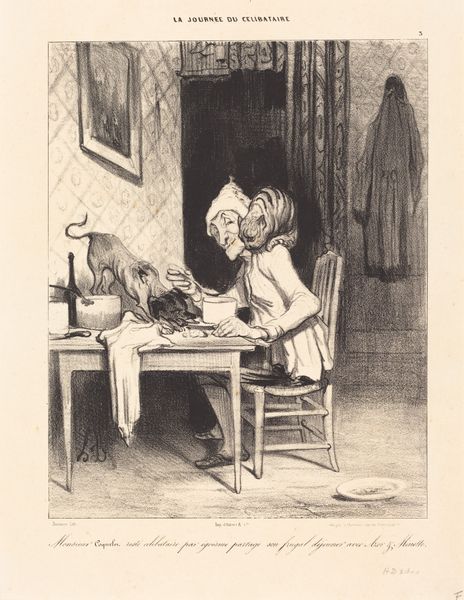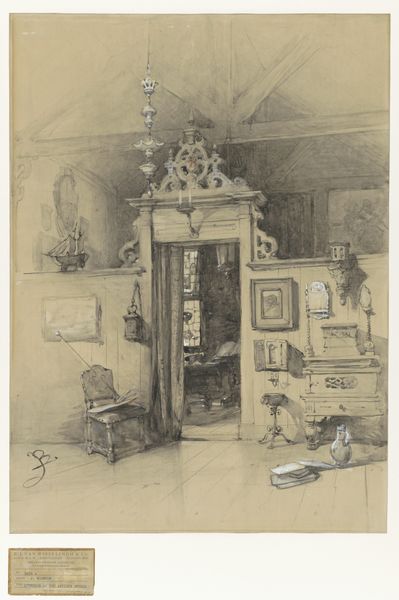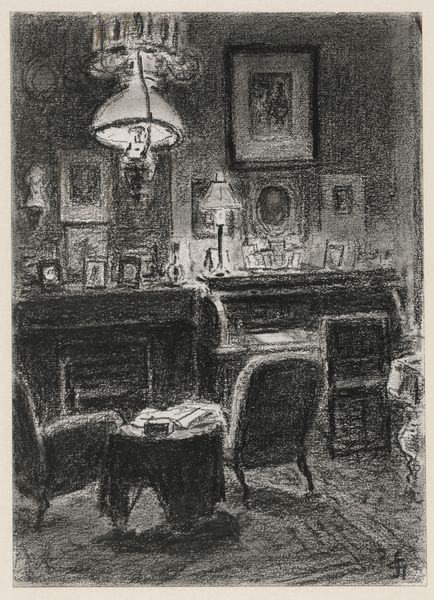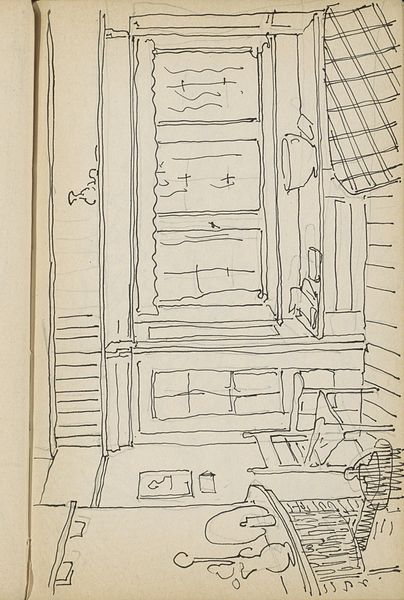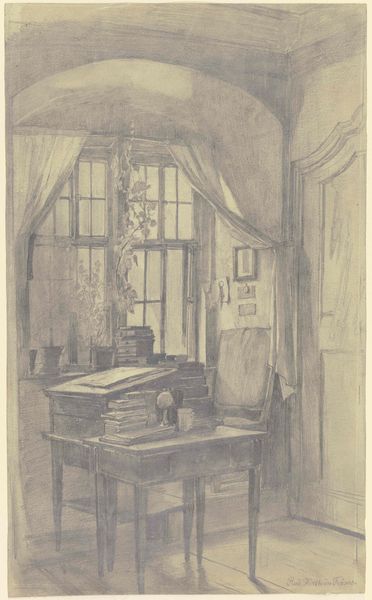
Interiør fra akademiet med tegnende unge kunstnere 1825 - 1826
0:00
0:00
drawing
#
drawing
#
romanticism
#
genre-painting
Dimensions: 182 mm (height) x 115 mm (width) (bladmaal)
Curator: Martinus Rørbye's drawing, "Interior from the Academy with Young Artists Drawing", made sometime between 1825 and 1826. It’s a genre scene, currently residing at the SMK—the National Gallery of Denmark. What springs to mind for you when you look at it? Editor: Honestly? A quiet melancholy. The light feels subdued, the palette limited to grays. It evokes a very still, thoughtful atmosphere. Curator: That’s astute. Rørbye captures a sense of dedication to the craft. We are granted a look inside the artistic sanctum. Observe the focused young artists, diligently sketching from a plaster cast of what looks like Cupid, each seeking to master form and technique. It reminds us that even geniuses start with fundamental studies. Editor: Yes, and look at the composition, though—there's one figure gazing out the window. Perhaps dreaming of landscapes beyond the studio? A clever juxtaposition between disciplined work and romantic longing for something...more? Curator: I agree. That tension between structure and yearning reflects a key characteristic of Romanticism, the art movement dominating the period. It shows the internal world, where intense emotion and sublime nature hold greater value. Thinkers of that era were moving away from the Neoclassical’s interest in objective reality and perfection. Editor: These subtle rebellions are what I adore! One person breaking away from what society demands and maybe what art is telling you, to step out from this studio and look towards the outside world. And there is, again, a wonderful sadness. Curator: He did return from this period and embraced genre scenes in Southern Europe and depictions of the daily life of everyday people that may have excited that yearning that figure may have. Editor: Rørbye is not necessarily among the pantheon of artistic giants, but he provided some windows into the social history that existed at the time, capturing a snapshot of a period and an inside perspective, that has far broader meaning now, looking back centuries later. I am always fascinated about artists that captured the ordinary and made it extraordinary. Curator: Precisely! He has captured both an academy interior and the seeds of change that mark that transitional period.
Comments
No comments
Be the first to comment and join the conversation on the ultimate creative platform.

